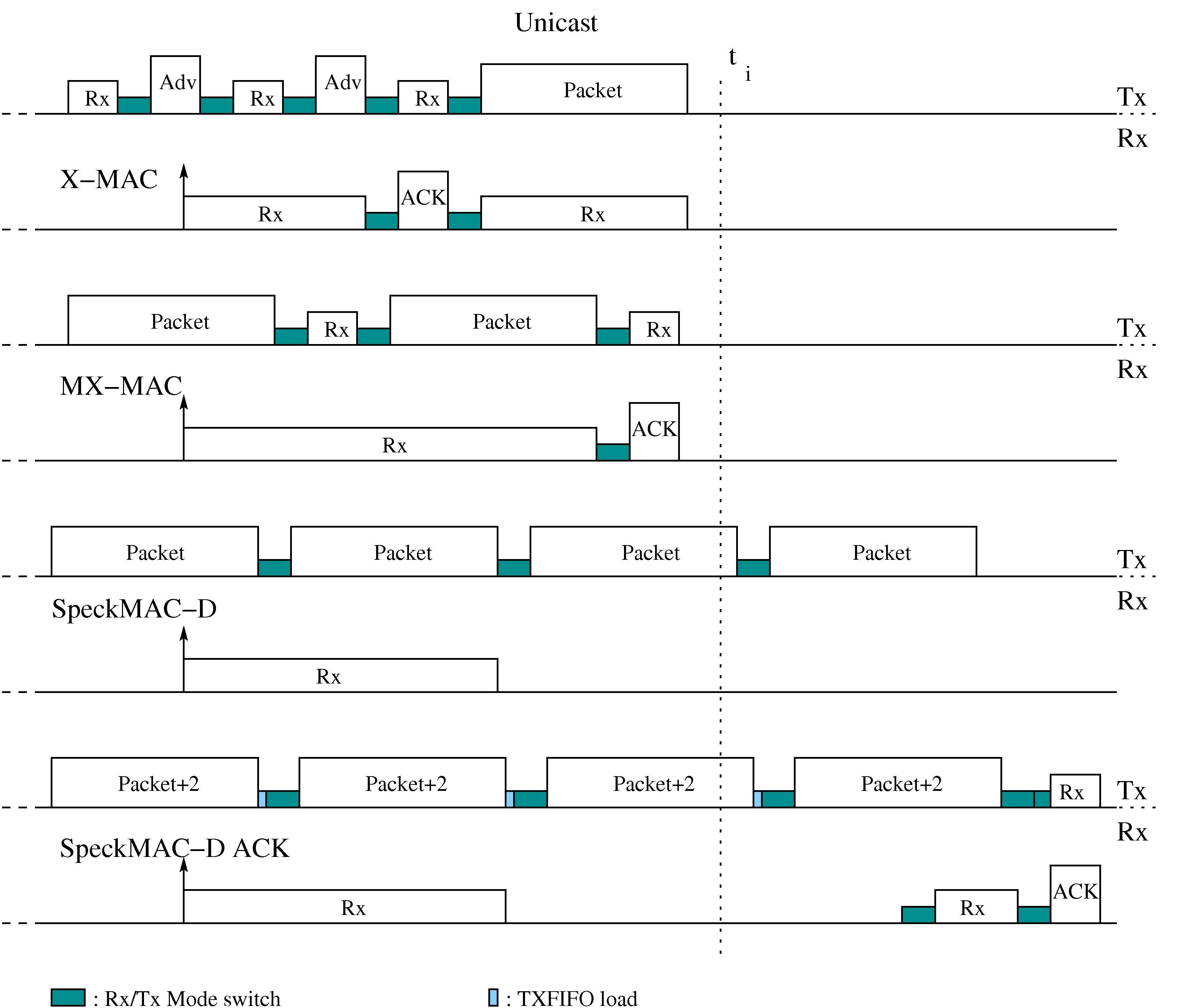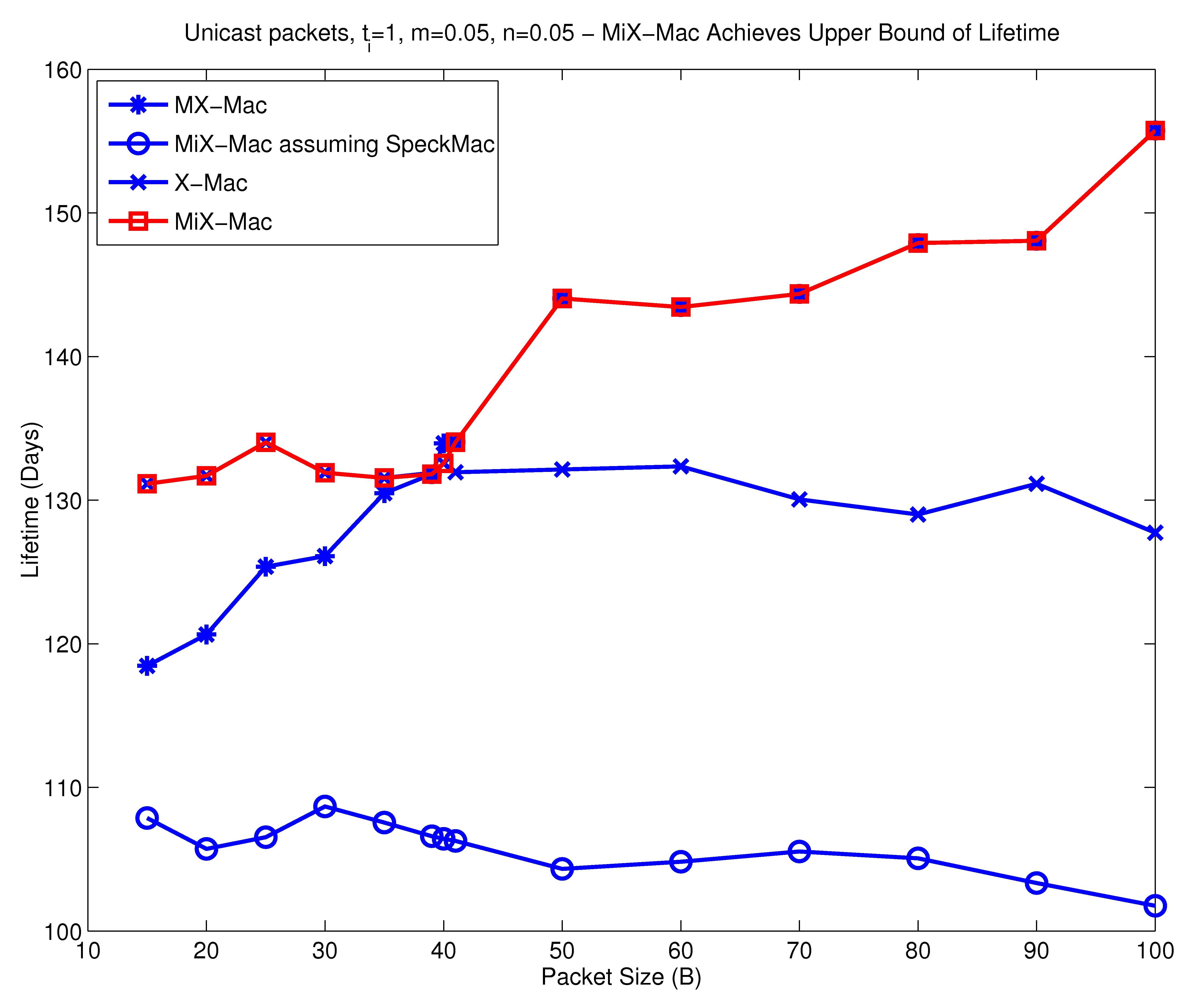
Figure 1: X-MAC, MX-MAC, SpeckMAC-D and SpeckMAC-D-ACK protocol timelines for unicast packets. ti is the channel check interval.
MAC protocol design thus had to be re-thought, and a new generation of Low-Power-Listening (hereby LPL) MAC protocols were introduced as a result. LPL protocols use the principles behind Aloha with preamble sampling: the sending node occupies the medium for long ti intervals to signal its imminent packet transmission. Receiving nodes are thus allowed to sleep for at most the duration of this preamble (ti), and they must stay awake when they sense a busy medium until the packet transfer is complete.
While a MAC protocol may reduce energy consumption for unicast packets, it may at the same time waste energy when applied to broadcast packets. The same can be said of packet size, or the ratio of packet transmissions to receptions. MiX-MAC adopts the transmission MAC schedule that yields the best lifetime taken from a pool of compatible protocols: X-MAC, MX-MAC (a modified version of X-MAC), and SpeckMAC-D. These LPL protocols, whose time lines are shown below, are called compatible because the receiver does not need to know which MAC schedule is being used.

MiX-MAC uses a lookup table in order to pick the MAC schedule most adapted to the current set of parameters affecting network lifetime or throughput: number of transmissions-to-receptions ratio, packet size, ti, broadcast / unicast nature of the packet.
The lookup table must be built before network deployment, through the detailed study of the protocols that are part of the pool. Consequently, we also carried a very thorough survey of the existing X-MAC and SpeckMAC-D protocols.
Through analysis and implementation on the Tmote Sky, we were able to show that MiX-MAC is able to achieve the upper bound of the node lifetime by picking the correct schedule.

Thus, we proposed making each node on a path back-off from its originally planned next wake-up time. The direct consequence is that nodes on a synchronized path wake up immediately after their transmitting neighbor.
A short mathematical analysis helps prove that it takes only n+1 packets to synchronize a path, where n is the number of hops on this path.
Through advanced simulation and implementation, we were able to vindicate this simple concept. This led to a significant reduction in energy consumption (dependant on ti) and in packet delivery delay (by 18%). Most importantly, these improvements happen without overhead because no explicit synchronization is required.
For more information, please refer to the list of publications or email Chris Merlin.
Synchronization
While collecting results of the implementation for MiX-MAC, we noticed that nodes running certain MAC protocols had a tendency to naturally synchronize: they would wake up at around the same time without explicit synchronization. This caused packets to be dropped very often because a receiving would wake up at the same time as a sending node would start a transmission. or right at the end of the ti interval.